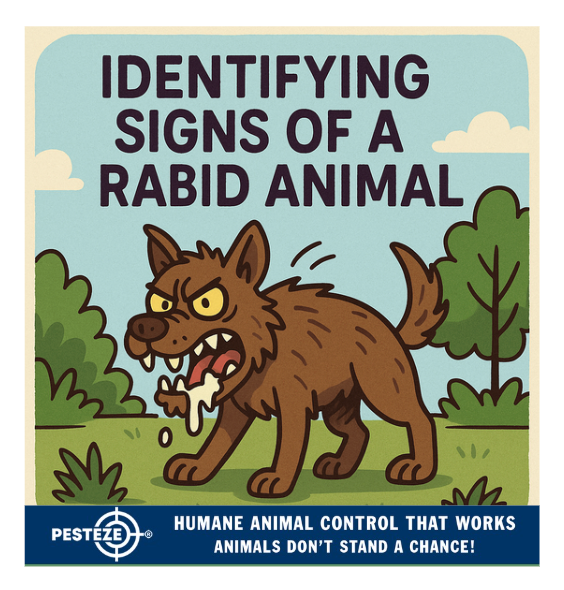IDENTIFYING SIGNS OF A RABID ANIMAL

IDENTIFYING SIGNS OF A RABID ANIMAL
SUMMARY
Rabies is a deadly viral disease that can spread from animals to humans. Recognizing the signs of rabies in animals is essential for protecting yourself, your pets, and your community.
FEATURES
-
Unusual aggression: Animals may act violently without reason.
-
Excessive drooling: A common symptom of rabies infection.
-
Disorientation: Stumbling, paralysis, or loss of coordination.
-
No fear of humans: Wild animals may approach people boldly.
-
Strange vocalizations: Unusual growls, barks, or cries.
-
Nocturnal animals in daylight: Seeing raccoons, bats, or skunks active in the day.
GUIDE DESCRIPTION
Rabies is one of the most dangerous zoonotic diseases, almost always fatal once symptoms appear. Knowing how to identify signs of a rabid animal is crucial to preventing exposure and ensuring timely medical intervention if needed.
One of the earliest indicators is unusual aggression. Rabid animals often attack without provocation, showing extreme irritability or violent behavior. Even typically shy animals may suddenly become hostile.
Another classic symptom is excessive drooling or foaming at the mouth. This results from paralysis of the throat muscles and is a strong warning sign of rabies infection.
Disorientation and paralysis are also common. Infected animals may stumble, appear weak, or drag their limbs. Some may exhibit partial paralysis, affecting movement and coordination.
Rabid animals often lose their natural fear of humans. Wild animals such as raccoons, skunks, or foxes may approach people boldly, which is abnormal behavior. Similarly, nocturnal species may be active during the day, a red flag for rabies.
In addition, rabid animals may produce strange vocalizations. Dogs may bark hoarsely, bats may screech unusually, or other animals may make distressed or odd sounds.
It’s important to remember that rabies does not always present the same way. Some animals may appear unusually tame, lethargic, or confused rather than aggressive. Regardless of the symptoms, any animal displaying abnormal behavior should be treated as potentially rabid.
If you suspect rabies, avoid direct contact with the animal. Keep pets and children away, and immediately contact local animal control or public health authorities. Do not attempt to capture or kill the animal yourself, as this increases the risk of exposure.
Recognizing and responding quickly to the signs of rabies can save lives. Always take precautions and seek professional assistance to handle potentially rabid animals safely.
- Saneeth Thota


Comments 0